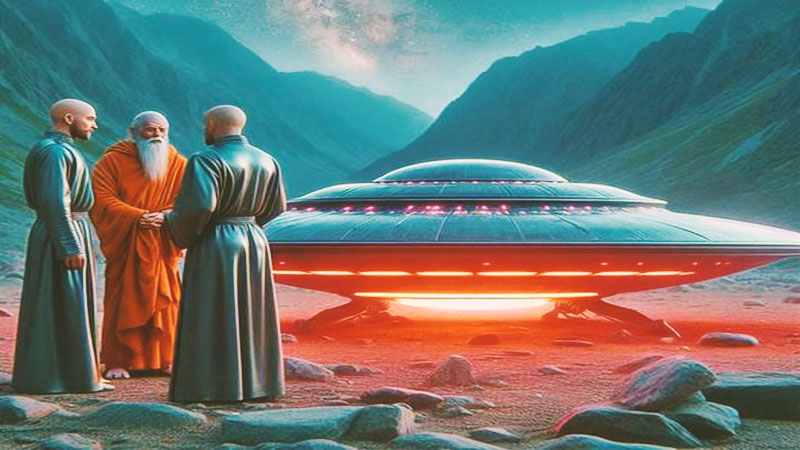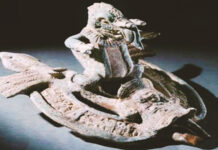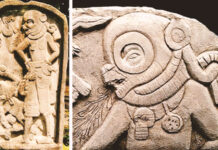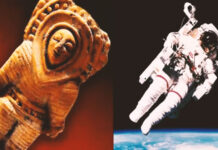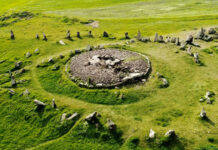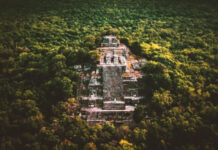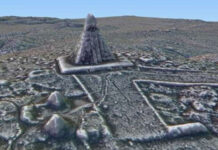In most ancient cultures, the beings that were called “gods” were made of flesh and bone and had human needs, ate, drank and even had relationships with women as mentioned in the Book of Genesis, the Book of Enoch, and in the ancient mythologies of Greece, Egypt and the Hindus.
Chinese traditions are no different and tell fabulous stories about the gods and their influence on humans.
China was founded almost five thousand years ago by Huangdi, the Yellow Emperor, a man endowed with wisdom and divine talents.
Huangdi is credited with having a miraculous birth. His mother saw lightning circling around a “star”. The light was so strong that it blinded her vision. In the following weeks, she learned that she was pregnant. Twenty-four months later, she gave birth to the future emperor of all China.
It is curious, to say the least, that the pregnancy lasted 24 months, and we cannot help but notice the similarity to the alien abductions in modern accounts.
Legend has it that Huangdi was able to speak shortly after birth, and since childhood, Huangdi was very perceptive, gifted with an unusual intelligence and capable of establishing advanced reasoning on the most varied subjects, far beyond what is normal for his age.
After conquering the other kingdoms in battle, Huangdi became the founder of the Chinese nation and its first Emperor and is said to have ruled from 2697 BC to 2597 BC, an extraordinary long reign of 100 years in which he introduced important elements of Chinese culture, such as writing, the Chinese calendar, Taoism, Chinese astrology, Shuai Jiao, sericulture, Chinese medicine and feng shui.
During his reign, Huangdi was particularly interested in health and the human condition, developing a conception of human pathology, its causes and treatments, according to sex and age groups, distinguishing different cycles that delimit the relationship of internal organs with the phases of the day or common periods of human life.
In the last year of his reign, Huangdi prepared his “return to heaven” by building an altar at the base of Qiaoshan Mountain and when the altar was completed, the sky opened and a metallic Dragon (Huanglong) “descended from the sky”. The Yellow Emperor mounted the Dragon and, together with more than seventy of his officers, levitated in broad daylight until he disappeared from sight.

After his ascension to heaven, a mausoleum worthy of all his achievements was built: a replica of the world in a vast underground complex in the form of a palace surrounded by rivers of liquid mercury, where precious stones and pearls adorn the ceiling, representing the planets and stars of the night sky.
A 47-meter-high earthen pyramid was erected on top of the tomb, covering an area of 2 square kilometers, which has never been properly explored for fear that erosion could damage it. Recent research has detected high levels of mercury in the soil, which is toxic and makes exploration work dangerous.
The only part of the tomb that has been excavated is the hall where the thousands of statues of the terracotta warriors who would protect the Yellow Emperor in his afterlife are located, and were discovered by chance in 1974.

